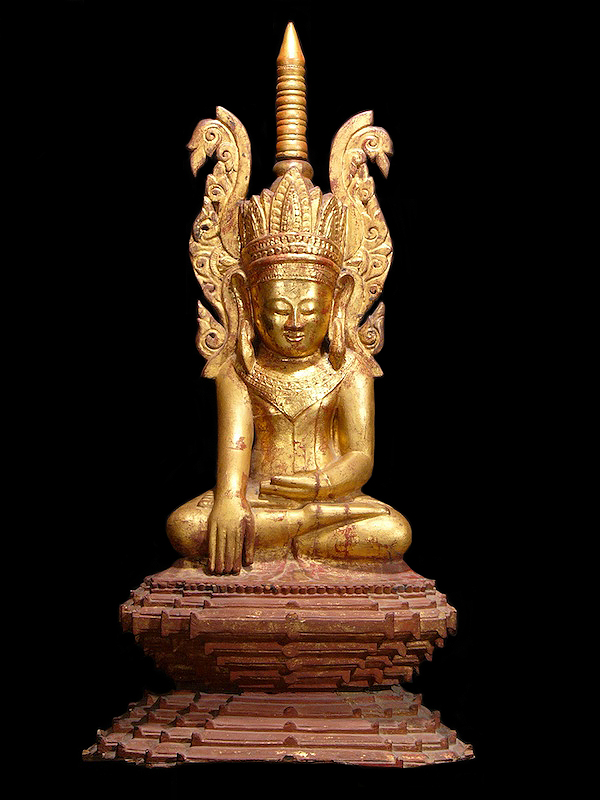
|
Ava Crowned Buddha from Burma, gilded teakwood, ca 1340 to 1450
Burmese Buddha statue, of wood covered with lacquer and gold foil, seated on a large Indian-style multi-tiered base, wearing a crown with large flanges and tall spire; 42" H including the spire, 21.5" W, 14" D. This style is called Jambupati (royal) attire, and such a statue is sometimes called a King Buddha. Ava was the capital of most of Burma from 1342 until 1785, after the collapse of the Pagan empire. During the First Ava period from 1342 until 1555, Shan kings from Shan state in north-east Burma ruled from their capital at Ava, near Mandalay, and Ava art of that period was similar to Shan Art. The Shan art styles also survived much longer in Shan state until the 19th century. The Museum of Anthropology arranged for a carbon-14 test of a wood sample from this statue, that indicates a date for the teakwood of 1286 to 1398 AD at 95% reliability. This very early date corresponds to the First Ava period. Although the style shows Shan characteristics, it is definitely not a later 18th or 19th C. Shan Buddha image, which is relatively common.
|